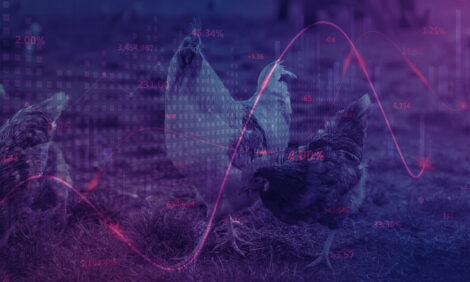



IPSF: Group size and spiking in broiler breeders
Hatchability rates are influenced by male-to-female ratio, group size and spikingReproductive efficiency in broiler breeders is a critical factor for maximizing production. Fertility and hatchability rates are influenced by numerous variables, including male-to-female (MF) ratio, group size, spiking, and flock age.
Patricia Quino and colleagues, Auburn University, presented a poster session on the results of a study aimed at determining the influence of group size and spiking on fertility and hatchability rates. The poster session was presented at the 2025 International Poultry Scientific Forum.
A total of 396 female and 64 male broiler breeders were distributed among large pens (L; 15’x6’) and small pens (S; 4’x6’) at 20 weeks of age (woa). Birds were randomly allocated into 4 treatments (n=4 pens/treatment): L with spiking (LY), L without spiking (LN), S with spiking (SY), and S without spiking (SN).
Birds were photostimulated at 21 woa. All pens maintained a 1:9 MF ratio with identical stocking densities, resulting in 4 males in the large pens and 1 male in the small pens. The large pens were reduced to 3 males at 32 woa to maintain industry MF ratios. At 45 woa, the single male in SY was replaced with a spiker male, while in LY, one of the three males was exchanged.
Eggs were collected per pen over 3 days at 30, 40, and 50 woa and stored in an egg cooler (20°C and 65% relative humidity; RH). Eggs were set in a single-stage incubator (37.5°C and 65% RH). Eggs were candled at transfer (day 18) to assess fertility and embryonic mortality.
Fertility rates declined with age (P<0.01). There was also an interaction (P<0.01) with the large pens exhibiting higher fertility rates than the small pens at 40 and 50 woa. While there was no effect on early-embryonic mortality, mid-embryonic mortality was affected by group size (P<0.05), as the large pens had higher mid-embryonic mortality rates than the small pens.
Late-embryonic mortality increased with age (P<0.01), with rates at 50 woa (20.8%) higher than 30 (9.6%) or 40 (8.3%) woa. Group size also affected late-embryonic mortality (P<0.01), as the small pens displayed higher embryonic mortality at this stage than the large pens.
An interaction between age and group size (P<0.01) demonstrated that while the large pens had an increased late-embryonic mortality at only 50 woa, the small pens had a higher late-embryonic mortality rate than the large pens at all ages. As birds age, fertility declines and late-embryonic mortality increases, particularly in the small pens. These findings underscore the critical role of age and group size in influencing reproductive efficiency.









